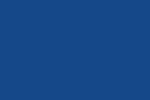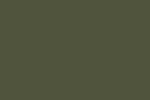
Farbex
Фарба гумова універсальна Rubber Paint
Specification
- Matt.
- Advanced resistance to weather effects, mechanic impacts, ultraviolet radiation and temperature fluctuation.
- It is washable (1 class acc. to DSTU EN 13300).
- Highly flexible with good adhesion to many surfaces.
- It is vapour permeable, resistant to cracking and has low water permeability (acc. to DSTU EN 1062).
- It is easy to apply and dries quickly.
Sphere of application
It is intended for decorative and protective coating of slate, tile, ondulin, zinked steel, aluminum, undercoated iron, flooring, cement, concrete, foam and gas concrete, brick, plastered surfaces, plywood, MDF, cement chipboard, chipboard, wood, gypsum surfaces, etc. The paint can be applied on the surfaces, previously coated with alkyd and oil paints. It is intended for interior and exterior works. It is intended for application on roofs, facades, socles, metal drain pipes, brick and stone, columns, fences, living rooms, corridors, walls in bathrooms, kitchens, catering spaces, playgrounds and sports complexes, trade halls etc.
Tinting
The product is manufactured in the following bases:
Base A. It is intended for use as a ready-to-use coating of white color or tinting into pastel, light tones and colors of medium saturation.
Base C. It is intended for tinting into saturated colors.
Base C can not be used as a ready-to-use coating without tinting.
It can be tinted manually with pigment concentrate Farbex Color, other water-based tinting pastes. It can be tinted in the color machine according to NCS color rate and others. When tinting the product, be sure that you use appropriate colorants, tinting equipment or catalogs suitable for exterior works. Do testing tinting and applying.
For saturated colors (yellow, red, pink, orange, green or yellow-green) the base surface shall be monocoloric. Otherwise, you will have to apply additional layers. We recommend applying the first coat with Base A (white or tinted in a similar pastel color) before applying the tinted (in saturated color) paint to lessen consumption.
To avoid differences in shades of color, we recommend using one batch of the product for a finish coat. It concerns both: the paint and the colorant. Remember that many conditions can affect your color perception: cold or warm lighting, shadows, the surface roughness.
Content
Technical data
| Consumption standard of 1 layer | 100-200 g/m2, depending on the way of application and type of surface. |
| Thinner | Water. It can be deluted 5% of the total weight maximum. |
| Application | Apply with a brush, a roller or a spraying gun |
| Drying period (23 °С, 50% RH) | 2 hours. Apply a subsequent coat only after complete drying of the previous one. The drying period increases if the temperature gets down and relative air humidity increases and depends on the application rate (thickness of coat) of the paint. |
| Color base | A (white) and C (semi-transparent) are shaded according to NCS color rate. |
| Solids content (DSTU ISO 3251) | 52±2 % (white (Base А), white RAL 9003, blue, brown, red brown, yellow brown, grey, cherry, black, beige) 54±2 % (white (Base С), green, graphite, light green, orange, khaki, yellow, bright blue, red) |
| Density (DSTU ISO 2811-1) | 1,25-1,3 g/sm3, depending on the color |
| Gloss (DSTU ISO 2813) | Max. 10 GU at 85° (matt, G3, DSTU EN 1062-1) |
| Dry film thickness | 100-200 µm, for a single layer (E3, DSTU EN 1062-1) |
| Particle size | Max. 30 µm, (fine-grained, S1, DSTU EN 1062-1) |
| Vapor permeability (EN ISO 7783-2) | 60-70 g/(m2*day), (middle, V2, DSTU EN 1062-1) |
| Water permeability (DSTU EN 1062-3) | 0.05-0.1 kg/(m2*h0,5), (low, W3, DSTU U EN 1062-1) |
| Marking acc. to the DSTU EN 1062-1 | G3|E3|S1|V2|W3|A0|C0 |
| Resistance to washing | Resistant to intensive repeated washing (1st class acc. to DSTU EN 13300) |
| VOC content (ISO 11890) | < 30 g/l., depending on the color. |
| Weathering and light fastness | The coating keeps protective and decorative properties in conditions of moderate continental climate not less than 7 years.* Life period of the coating depends on the preparation of the surface, conditions of application of the product and conditions of expoitation of the applied coating. |
| The finished coating can withstand ambient temperatures ranging from -20°C to +50°C. | |
| Warranty period | 36 months from the date of manufacturing (at the temperature from +5 °С till +35 °С) |
| Packaging | 1,2 kg, 3,5 kg, 6 kg, 12 kg |
- * - The complex coating consists of 1 coat of quick-drying anticorrosion primer TM Maxima and 2 coats of Universal rubber paint TM Farbex. The total thickness of dry film shall be not less than 160 microns. The test was carried out on the prepared steel plates at atmospheric conditions according to DSTU ISO 2810 and in the laboratory conditions under the artificial source of sun radiation (viscometer), according to DSTU ISO 16474-2.
Gloss
Color


















Application instruction
The main condition of receiving the desired result of coating is following directions on how to use a paint product and prepare the surface for coating.
1. Preliminary preparation
| Type of the base surface (substrate/surfaces) | Preparations | Priming or auxiliary pre-coating |
| Slate, ceramic, and mineral tile | These surfaces are rough enough - in the process of exploitation, they are quite easy getting dirty. Clean the surface thoroughly before application. You can clean it manually or use special equipment like a washer, which creates a high-pressure jet. We also recommend you make sure, that construction materials are suitable for coating with water-based products. In case of strong contaminations (moss, fungi and others) of the surface use antiseptic for mineral surfaces TM Farbex before application. Let the surface dry after cleaning. | A quality slate or tile are quite tough materials and need no priming. it is necessary to apply a thin coat of priming coating (a paint diluted maximum of 10%). It fixes tiny particles and dust, which remain on the surface. It increases the adhesion of the main coats of the paint product to the surface. |
| Corrugated sheeting, zinked metal, aluminum | These surfaces shall be thoroughly cleaned from contaminations. Remove corrosion mechanically (in case, if corrosion deposits are substantive, we recommend changing the sheets); grease and oily contaminations are better to clean with some detergents, for example, a solution of washing powder; other contaminations shall be removed mechanically. Wash cleaned surfaces with clear water, if possible under pressure. Let the surface dry well after washing. If corrugated sheeting is initially coated with special composite products or powder coatings, then clean the surface from all kinds of contaminations and pilled elements of the initial coating (there is no need to remove the initial coating completely). If the corrugated sheeting was coated with alkyd-based or waterborne paint products, remove them from the surface completely. | We recommend using a quick-drying anticorrosion primer TM Maxima to provide surface maximal durability. If corrugated sheeting is coated with special composite products or powder coatings, there is no need to use a primer. |
| Iron | The surface shall be treated with mechanic instruments (min degree St2) or abrasive jet cleaning (min degree Sa2½) according to DSTU ISO 8501-1. Degrease the surface with Universal thinner TM Maxima. | The iron surface shall be obligatorily primed with quick-drying anticorrosion primer TM Maxima before the coat is applied. |
| Mineral surfaces | Carry out the preparation of the base surface according to DSTU-N B A.3.1–23:2013 and DSTU-N B V.2.6–212:2016. The surface shall be dry - the humidity of the base surface shall not increase by 5% for cement surfaces and not higher than 1% for gypsum surfaces. Mineral surfaces shall be hard, without fragile parts or edges. The surface shall be clean from lime whitewash, grease, oily contaminations, dust (including the dust after polishing of a putty or a plaster), old paint coatings and wallpapers (which have poor adhesion to the base surface), polymeric glues, runs of construction solutions or composites. Elements of plasters, putties or glues shall be dry completely and be ready for coating with waterborne products. Remove all contaminations. Remove salts mechanically from the surface. Remove fungi and mould from the surface: at first mechanically. After that treat the surface with antiseptic for mineral surfaces TM Farbex. Correct defects on the surface with plaster TM Farbex. After that polish the surface and remove the dust. | Treat the surfaces, which were not coated before, with deep-penetrating primer TM Farbex. Take into account directions concerning the priming of construction mixtures or materials. If necessary ask for help specialists from POLYSAN company. |
| Plywood, WCB, MDF, OSB, CPB, wood | The surface shall be dry, and thoroughly cleaned till hard base from dust, dirt, mould, oily and other contaminations. Remove also peeled paint coats. Wooden surfaces shall be polished manually or by using abrasive equipment. Remove abrasive dust from the surface. If there is some wood resin on the surface, remove it mechanically (with a spatula or a scratcher). If wood is affected by blue stain, mould or fungi, the affected area shall be obligatorily removed: at first mechanically, then treat the wood with antiseptic for wooden surfaces TM Farbex. Correct defected areas with Plaster TM Farbex. Polish plastered surface and then remove dust. Wood humidity shall be less than 20% before the coating starts. | Prime the surface with acrylic wood-protective primer TM Maxima if the wood was not previously treated. Tough types of OSB, MDF and SPB boards need no priming. |
| The surfaces coated with alkyd-based, oily, waterborne paints and wallpapers | The surfaces already coated with oily and alkyd-based paint products shall be sandpapered till matt condition. Then rinse the surface with a weak solution of detergent and thoroughly clean with water. Let the surface dry. The surface, which is already coated with waterborne paints we recommend treating slightly with sandpaper. Then remove abrasive dust. Wallpapers shall be compatible with coating and have a perfect adhesion with the surface. It must be clean and dust-free. The wallpaper glue must be completely dry (according to the instructions). | Do not prime the surface, which is coated with alkyd-based, oily, waterborne paints. The wallpapers need no initial priming. |
Before using auxiliary products (a glue, an antiseptic, a plaster, a sealer, a primer, etc.) or specific base surfaces (unusual initial coating, exotic wood species, special coatings or materials and alike, we recommend testing on a small area of the surface, using technical recommendations or consultations from specialists.
2. Application
Make sure that the surface is dry enough after preparations before applying the paint. Stir the paint thoroughly, if necessary filter it and dilute it with water. Abnormal diluting spoils the quality of the coating!
Apply the paint in 2-3 coats. The first coat is basic. After applying the first coat, check the surface if there are no spots without paint, uncoated corners or edges. Coat thoroughly areas, which are difficult to reach. A subsequent coat is applied only after the complete drying of the previous one but not before the 4 hours. Finish coating allows adding the surface a smooth look, and improves protective and decorative effects. If the surfaces are too porous, rough or highly contrasted the paint consumption can increase. Test application on a small area determines precise consumption.
Remember! Mineral and wooden surfaces are porous materials, so the paint consumption and quantity of coats can increase.
Apply the paint continuously in one direction with equal consumption. We recommend carrying out the application from “edge to edge / from corner to corner” or within the limits of decorative elements without breaks. Working on large areas and/or for a long time, do not leave the container with the paint opened.
Apply the paint at the temperature of air and the surface from +10 °С till +30 °С and relative air humidity less than 80% (the temperature shall be more than 3 degrees higher from the dew point). Don’t apply the paint under direct sunlight, strong wind, frost and precipitation. The surface shall not be affected by precipitation and sub-zero temperatures for 24 hours after application is done.
The coating achieves complete hardness and resistance to weather effects and mechanical impact in 28 days.
If you use saturated colors (yellow, red, orange, green or light green) the base surface shall be of one color. Otherwise, you will need to apply additional coats. We recommend coating the base surface with Base A (white or tinted in a similar pastel color) to lessen the consumption of saturated color. We draw your attention if you want to avoid differences in color shades, use the paint from one batch for finish coating. In case you have containers of different batches, we recommend mixing them.
Universal Rubber paint can be applied in following ways:
|
Way of application |
Thinner quantity |
Jet size |
Pressure |
|
Airless spraying |
0 – 10 % |
0.017" - 0.023" |
15 - 18 МPа ( ≈ 150 - 180 bar) |
|
Pneumatic spraying |
0 – 10 % |
2,0 мм |
0,3 – 0,4 МPа ( ≈ 3 - 4 bar) |
|
A brush / a roller |
0 – 5 % |
- |
- |
Use tools recommended for waterborne products. We recommend using a cuvette with a roller for homogeneous wetting. Attention! Choose a roller with a shorter nap for a smoother surface. If you use tools for spraying, follow the instructions on how to use them. The best way of spray application is airless. Pneumatic spraying may demand maximal recommended dilution of the paint that can lessen the thickness of the coat and cause runs. You need good skills to get a quality coating, especially if you want to use professional tools.
For exterior works, we recommend using a “tent cover for facades and scaffoldings”.
We don’t recommend using the paint as hydro isolating product, coating floors (or other surfaces under intensive mechanical exploitation)!
If long-lasting water influence (especially on horizontal surfaces) it is possible “whitening or opacity” of rubber paint colored coatings. The color recovers after drying.
Compatibility with other coatings
Depending on the conditions of exploitation, the paint can used with various primers and finish coatings. The examples are shown below. Ask specialists of POLYSAN Company for more detailed recommendations.
The previous coating can be waterborne acrylic products or alkyd-based products.
The next coating shall be waterborne acrylic products.
Test compatibility of the products on a small area of the surface.
3. Tool cleaning
Rinse thoroughly the tools with water after application.
You may also be interested in
Use with this product
References

Фасад приватного будинку пофарбовано універсальною гумовою фарбою Rubber Paint Farbex Кольори: сіро-бежевий RAL 1019, коричневий …

Пофарбовано гумовою універсальною фарбою Rubber Paint Farbex. Кольори: чорний (RAL 9004), жовтий (RAL 1021)

Розпис створено універсальною гумовою фарбою Rubber Paint Farbex

Фасади пофарбовані універсальною гумовою фарбою Rubber Paint Farbex Кольори: графіт RAL 7024, помаранчевий RAL 2008 …
Tips

Гумова фарба для стін
Поява гумової фарби докорінно змінила сприйняття споживачів про властивості і застосування фарби. Вона за короткий час завоювала любов споживачів своєю універсальністю і характеристиками. І хоч гумова фарба підходить для різних типів поверхні, у цій статті пропонуємо детальніше розглянути, чому варто …

Гумова фарба для даху: поради і особливості нанесення
Своєчасний догляд і періодичне фарбування даху – ось запорука якісної покрівлі, яка віддячить вам довгими роками служби. У цьому матеріалі ви дізнаєтесь, як підготувати дах до фарбування і чому гумова фарба підходить для цього найкраще. Фарбування виконує не тільки естетичну …

Як самостійно пофарбувати фасад?
Хочете оновити зовнішній вигляд будинку, але не знаєте з чого почати? Користуйтесь порадами із цієї статті, щоб отримати результат, яким ви будете задоволені. Вибір фарби Робота по оновленню фасаду починається із вибору якісної фарби, яка забезпечить гарний зовнішній вигляд будинку …

Як розрахувати кількість фарби?
Дуже часто на ремонт та оновлення квартири/будинку витрачаються чималі кошти. Саме тому, під час планування ми намагаємося розрахувати все максимально точно, щоб уникнути повторних витрат, і щоб не знадобилось знову їхати чи йти до магазину. Фарба не є виключенням. Дуже …

Застосування універсальної гумової фарби
Універсальна гумова фарба Ваш дах покритий оцинкованим листом чи шифером і вже не виглядає як новий…? А хочеться, щоб було гарно…? Пофарбувати цоколь, фасад, стіни ванної або підвалу ...? Стара покрівля місцями тече… чи треба герметизувати стики на новій покрівлі…? …

Як отримати нові відтінки гумової фарби Rubber Paint Farbex
Гумова фарба Farbex з’явилася у 2013 році і швидко стала популярною серед споживачів. Вона володіла унікальною здатністю адаптуватись для нанесення на практично будь-яку поверхню: для фарбування даху (оцинковка і шифер), металічних, мінеральних та дерев’яних поверхонь. Відрізнялася унікальними характеристиками, адже створювала …
Фарба гумова універсальна Rubber Paint Farbex
Rubber paint Farbex
повністю
Flow calculator
Consumption standard of 1 layer
When calculating the area to be painted, you need to subtract the area that will not be painted. (windows, doors, etc.)
Paint consumption may vary depending on dilution and uniformity of application of the paint.










